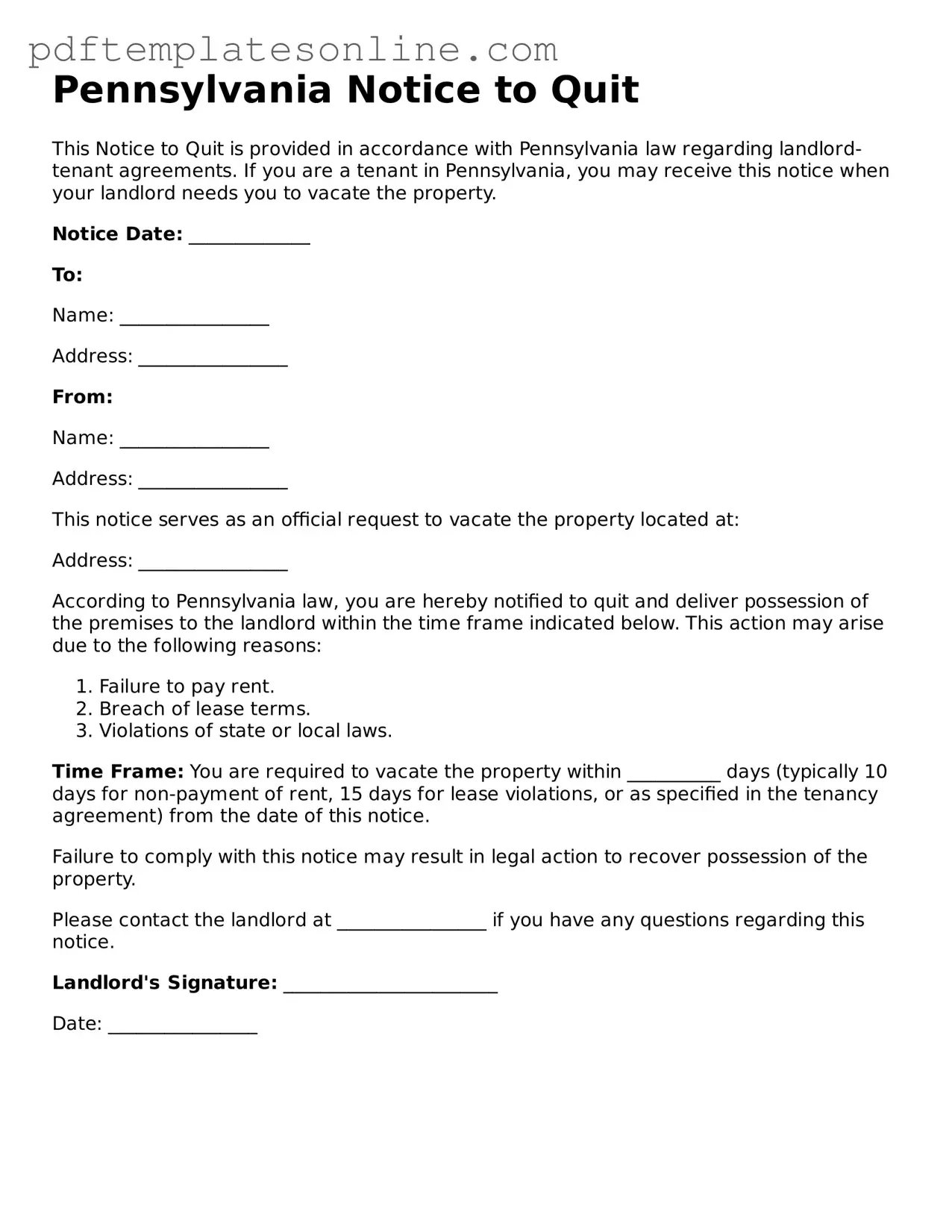Filling out the Pennsylvania Notice to Quit form can be a straightforward process, but many individuals make common mistakes that can lead to complications. Understanding these pitfalls is essential for ensuring that the notice is effective and legally sound.
One frequent mistake is failing to include the correct date. The date should reflect when the notice is being issued, as this is critical for establishing the timeline for the tenant to vacate the property. If the date is incorrect, it can create confusion and potentially delay the eviction process.
Another error involves not providing sufficient details about the rental agreement. The form should clearly outline the terms of the lease, including the rental period and any specific violations that have occurred. Omitting this information can weaken the notice and make it harder to enforce.
People often overlook the importance of identifying the tenant accurately. It is essential to use the full legal name of the tenant as it appears in the lease agreement. Any discrepancies can lead to challenges in court, should the matter escalate.
Additionally, some individuals forget to sign and date the form. A Notice to Quit is not valid unless it is signed by the landlord or their authorized agent. This simple step is crucial for the document's legitimacy.
Another common mistake is failing to provide the proper delivery method. The notice must be delivered according to Pennsylvania law, which may include personal delivery, mail, or posting on the property. Ignoring these methods can result in the notice being deemed invalid.
People sometimes make the error of not keeping a copy of the notice for their records. Having a copy is essential for tracking communications and can serve as evidence if legal action becomes necessary. It is a good practice to document all correspondence related to the eviction process.
Some landlords also mistakenly believe that one notice suffices for multiple violations. If there are several issues, each may require a separate notice to ensure clarity and compliance with legal standards. This can prevent misunderstandings and strengthen the case if it goes to court.
Another mistake involves using vague language when describing the reasons for the notice. Clear and specific language helps to avoid confusion. Being precise about the lease violations can aid in a smoother resolution and can be beneficial if the situation escalates.
Finally, many individuals fail to understand the timeline for action after issuing the notice. Pennsylvania law outlines specific timeframes for tenants to respond or vacate. Missing these deadlines can hinder the eviction process and create unnecessary delays.
